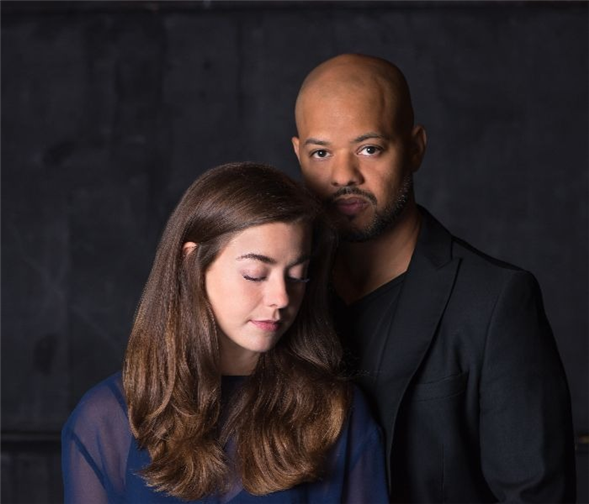Translate Page

After a successful engagement last fall, Bedlam's The Crucible is having an encore run at the Connelly Theater from March 27 to April 26.
The lauded theatre company puts its singular stamp on the Arthur Miller classic
---
Even before it begins, Bedlam's take on Arthur Miller's The Crucible is meant to jar. The sparse Connelly Theater stage looks like it could be Puritan New England, which is when this drama about the Salem witch trials takes place. But the lighthearted Muzak filling the preshow air is totally today.
That dichotomy is important according to Eric Tucker, the artistic director of Bedlam, a theatre company known for adventurous yet minimalist stagings of classics featuring small casts and few props. When Miller wrote The Crucible in 1953, it was intended as a commentary on senator Joseph McCarthy's communist witch hunts, but over the decades it's become an allegory for any influencer who whips society into a violent frenzy. Following a run in Cambridge, Massachusetts earlier this fall, Bedlam has brought the production to New York in association with the Nora Theatre Company.
Tucker realizes that most audiences come to The Crucible with memories of other productions. It's played on Broadway six times, been adapted into multiple films, and is a favorite of schools and regional theatres. That's why the director wanted "to get rid of some expectations" right away. The opening scene looks like a museum diorama come to life, with moments of carefully timed comedic chaos that soon give way to tragedy as people's lives are destroyed by political manipulation and mass hysteria.
That spiraling is performed in Bedlam's signature stripped-down aesthetic, well-known to audiences who've seen the company's other productions such as Sense and Sensibility, Pygmalion, Peter Pan and Uncle Vanya. One bed, a few tables and chairs, and some portable lights are scattered throughout the performance space and moved from scene to scene by the actors, who are dressed in muted shades of black and gray. Even when they're not part of the immediate action, characters often remain in view, watching and listening as their community unravels. The tension is highlighted -- literally -- whenever the performers light each other, causing some private moments to resemble police interrogations.
{Image1}
"There is something to people lighting each other and lifting each other and creating the atmosphere together," Tucker says. "To me, that makes it more theatrical."
The space also helps enhance the oppressive atmosphere according to Tucker. Originally an orphanage, the Connelly Theater was built in the 1870s and is simple, unadorned and a little dreary -- just like the characters' lives.
"It all comes out of the space," Tucker says. "It's so stark. Their lives are very spare and there are all these rules. They can't dance, they don't listen to music… I just felt like the play should reflect that."
Perhaps the production's most radical element is a change in the way Abigail -- the teenage girl who accuses her ex-lover John Proctor and his wife of supernatural crimes -- is presented. In addition to Truett Felt's nuanced performance, Tucker includes a frequently cut scene in which Abigail defends her actions to Proctor, speaking of Salem's hypocrisies and the marginalization of women.
"A lot of the times I've seen The Crucible, Abigail's like this sexual vixen, a young girl who's out to take down John and the town," Tucker says. "She's made out to be the villain. We've tried to make her smart and right about her own point of view and non-histrionic. Young women were low on the totem pole, just above the slaves. They were beaten, sexually abused, their lives were ruined if they had sex before marriage. So of course they were going to figure out how to get a little power. It's survival."
These insights are how Tucker and his company are creating a revitalized Crucible for the 21st century. "Now that we're doing it, this play feels far more timely than I expected it to," he admits. "You're watching a period piece that feels like today."
---
TDF MEMBERS: At press time, discount tickets were available for The Crucible. Go here to browse our current offers.
Carey Purcell writes about pop culture and politics for Vanity Fair, Politico and other publications, and blogs at CareyPurcell.com.
Top image: Truett Felt and Ryan Quinn from The Crucible. Photos by Ashley Garrett.